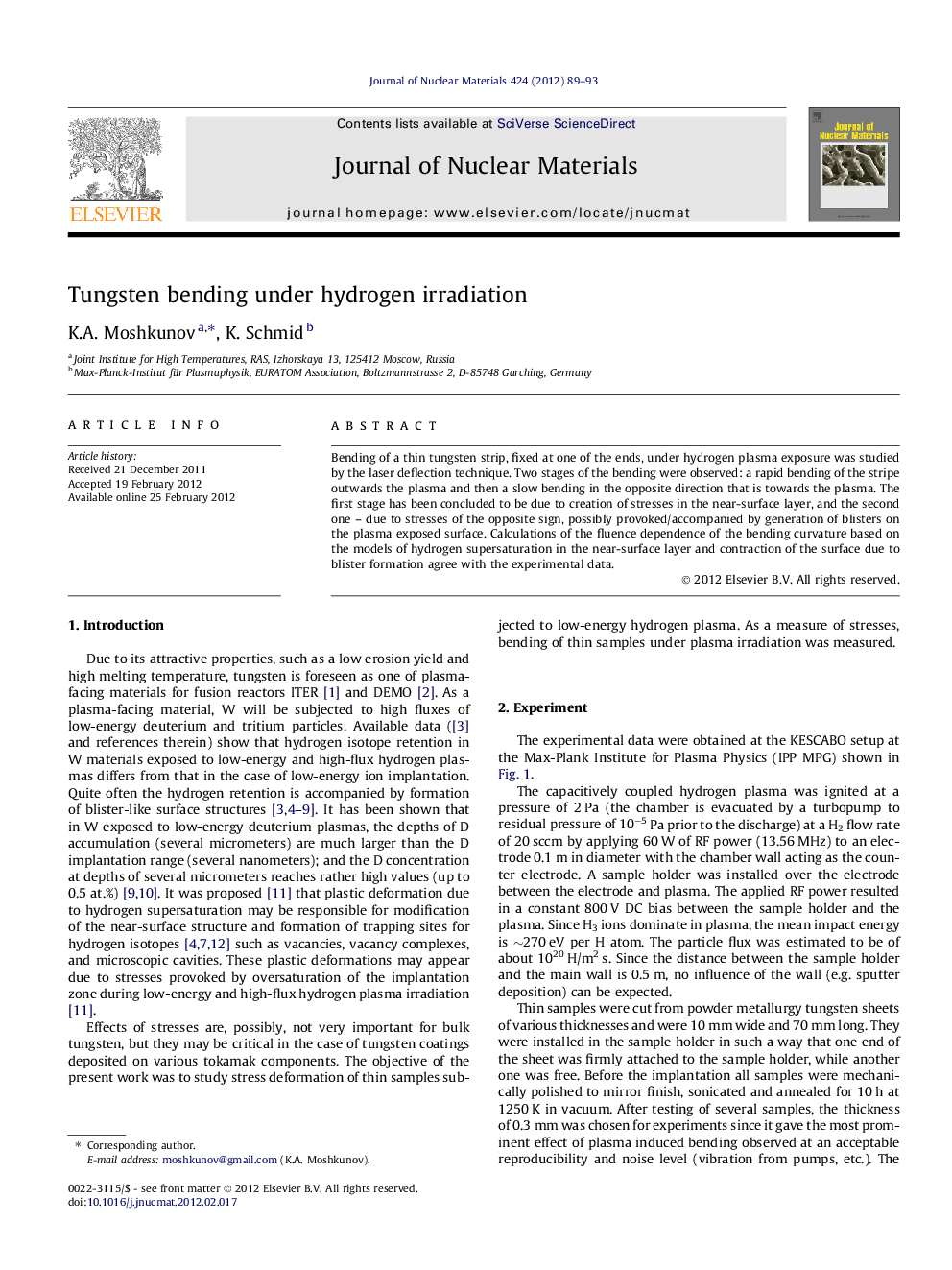| Article ID | Journal | Published Year | Pages | File Type |
|---|---|---|---|---|
| 1566170 | Journal of Nuclear Materials | 2012 | 5 Pages |
Bending of a thin tungsten strip, fixed at one of the ends, under hydrogen plasma exposure was studied by the laser deflection technique. Two stages of the bending were observed: a rapid bending of the stripe outwards the plasma and then a slow bending in the opposite direction that is towards the plasma. The first stage has been concluded to be due to creation of stresses in the near-surface layer, and the second one – due to stresses of the opposite sign, possibly provoked/accompanied by generation of blisters on the plasma exposed surface. Calculations of the fluence dependence of the bending curvature based on the models of hydrogen supersaturation in the near-surface layer and contraction of the surface due to blister formation agree with the experimental data.
